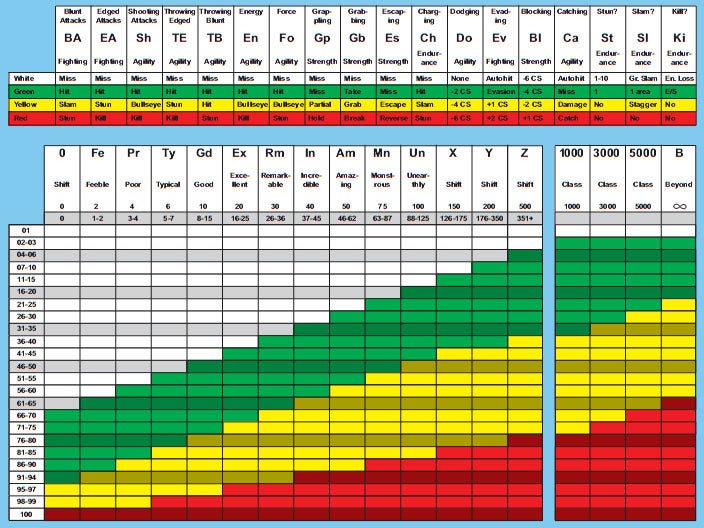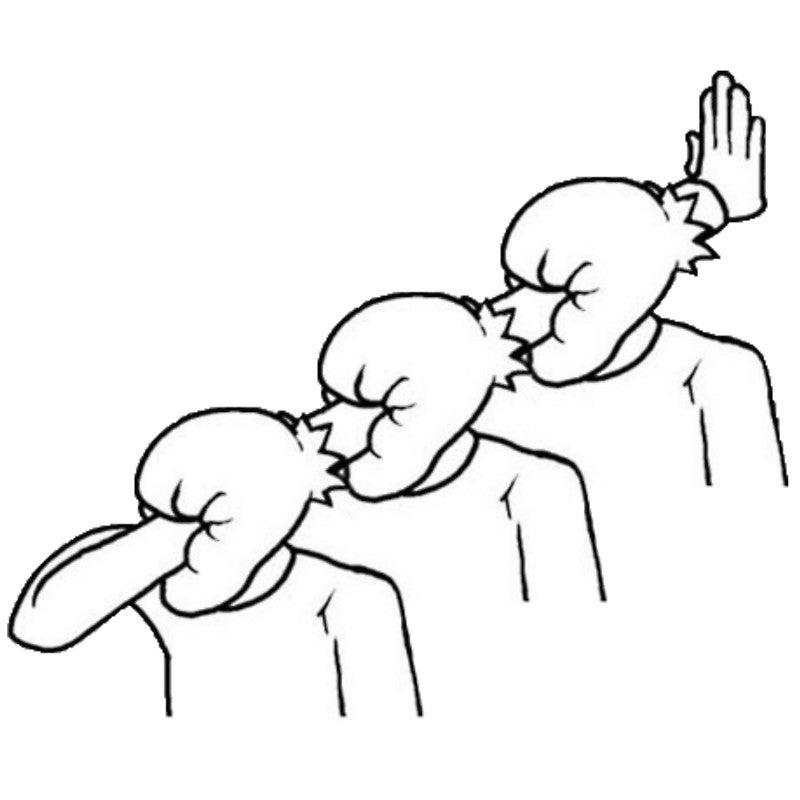 "RamblinRover Luxury-Yacht" (ramblininexile)
"RamblinRover Luxury-Yacht" (ramblininexile)
04/17/2018 at 09:42 • Filed to: musiclopnik
 1
1
 14
14
 "RamblinRover Luxury-Yacht" (ramblininexile)
"RamblinRover Luxury-Yacht" (ramblininexile)
04/17/2018 at 09:42 • Filed to: musiclopnik |  1 1
|  14 14 |
Am I CalzoneGolemBait-ing, or are we merely all Devo?
 CalzoneGolem
> RamblinRover Luxury-Yacht
CalzoneGolem
> RamblinRover Luxury-Yacht
04/17/2018 at 09:51 |
|
I stared this before I even read that you were baiting me ... it worked. It worked so hard.
 RamblinRover Luxury-Yacht
> CalzoneGolem
RamblinRover Luxury-Yacht
> CalzoneGolem
04/17/2018 at 10:01 |
|

Oh no! We’re
all
Devo. (To be honest I’d have been posting it anyway.) Unrelated, did you see in my recent posts that I now have Marvel Super Heroes Advanced RPG?
 CalzoneGolem
> RamblinRover Luxury-Yacht
CalzoneGolem
> RamblinRover Luxury-Yacht
04/17/2018 at 10:04 |
|
Spud Bois for life.
I did not see that. Is it D6? I am playing in a super hero campaign and we’re using a home brew system the other guys came up with.
 RamblinRover Luxury-Yacht
> CalzoneGolem
RamblinRover Luxury-Yacht
> CalzoneGolem
04/17/2018 at 10:23 |
|
It’s literally all percentile. Which is odd, considering it came from TSR at the same time as Basic-Advanced-Expert, though obviously there was some flirting with percentile for skills and whatnot around that time. It’s more abstract than D&D in some regards, but not as abstract as the later Marvel systems (diceless, eww), and it’s still granular in a lot of regards. It has a contacts system and reputation, which is a little reminiscent of Shadowrun, and works on stat improvements rather than leveling (also like Shadowrun). A given stat (Fighting, Agility, Strength, Endurance, Reason, Intuition, Psyche) is generated with percentile dice, modified by if you’re playing a modified human, mutant, alien, or tech hero, and then most things are stat rolls that have to be in a success band for difficulty.

If you rolled a “Monstrous” strength in generation, and you’re trying to do an Inhumanly hard strength thing, you’d roll in the Monstrous column and be good with any results green or better. A Monstrously hard thing, yellow band (usually). Remarkable, succeeds automatically. If you’re weakened, your strength would be bumped one or more categories left, and you’d roll in that column.
I know there’s a DC Comics RPG out there, don’t have it or GURPS Super at this time.
 CalzoneGolem
> RamblinRover Luxury-Yacht
CalzoneGolem
> RamblinRover Luxury-Yacht
04/17/2018 at 10:31 |
|
It’s literally all percentile.
Wat? That’s weird man.
 RamblinRover Luxury-Yacht
> CalzoneGolem
RamblinRover Luxury-Yacht
> CalzoneGolem
04/17/2018 at 10:47 |
|
That is, I haven’t encountered anything non-percentile. Haven’t finished reading but that’s what I’ve got so far. Most of the single-die systems out there are because everybody has d6s (West End Star Wars, Dragon Age, Shadowrun, etc.) or because of severe autism (all the Storyteller/White Wolf games with d10s), not because Everything Is On A Scale Of 1-100.
I think one of the legendary Bad RPGs called Synnibarr was obsessed with percentile even worse. Like an example in its book was the party tying up a boat and the DM rolling the chance that the boat wouldn’t be there when they got back (percentile) and then rolling again to see whether it was. Basic storytelling hijacked by random crazy.
You should try something in Savage Worlds. Stats and skills are dice size (d4-d12), and you’re trying to hit a 4 almost all the time, plus/minus bonuses and penalties... and every time you exceed the target # by 4, you get extra good things to happen, and each roll on which you hit the max on the die, the roll “explodes” - i.e. 4 on d4 means take the 4 and roll again. Oh, and initiative is dealt with playing cards each round, and you can take as many actions a round as you like as long as you can take the penalties for it... which with narrowly boxed ranges from the dice and minimal bonuses available isn’t as crazy as it sounds. Fairly easy, but also fairly loony.
 CalzoneGolem
> RamblinRover Luxury-Yacht
CalzoneGolem
> RamblinRover Luxury-Yacht
04/17/2018 at 10:57 |
|
I like d6 systems because they’re easy to play. I’ve only dm’d ad&d 3rd edition. That example sounds like some slavish adherence to a rule system that should be avoided in a tabletop setting. But I’m more of a role player than a number cruncher.
 RamblinRover Luxury-Yacht
> CalzoneGolem
RamblinRover Luxury-Yacht
> CalzoneGolem
04/17/2018 at 11:18 |
|
What’s interesting is that there are so many different ways to use a given die. Dragon Age uses three d6 for attack rolls and skills, which makes it a little more like D&D (3-18 instead of 1-20), but one of the dice is a “Dragon die” which generates “stunt points” any time any two dice roll doubles - stunt points equal to the roll on the Dragon die. In contrast, Shadowrun does dice pools: x number of d6, success (“hits”) on 5 or 6. Then there’s Savage Worlds, in which you roll a d6 along with your main die and keep the better result... if you’re a PC or elite NPC. West End Star Wars is I think like a simpler Dragon Age in some respects.
Call of Cthulhu uses mostly percentile in 7th edition, though stat gen is with d6s.
I’ve DMed D&D 3/3.5, 4, Pathfinder, RIFTS, Shadowrun 4, Savage Worlds Deadlands, Nightbane, Dragon Age, Paranoia (4th), Star Wars Saga Edition, and probably a couple of others. I’ve played in Vampire: The Requiem, Paranoia XP, and probably a couple of others, and I’ve additionally got game books for D&D Basic, 5th (starter), Marvel Superheroes, RIFTS Chaos Earth, After The Bomb, Mechanoids, Numenera, and Call of Cthulhu, which I know the rules for but haven’t played yet.
 CalzoneGolem
> RamblinRover Luxury-Yacht
CalzoneGolem
> RamblinRover Luxury-Yacht
04/17/2018 at 11:49 |
|
I like the one die in some d6 systems that determines wether what you’re doing is a critical hit or disastrous fail.
 RamblinRover Luxury-Yacht
> CalzoneGolem
RamblinRover Luxury-Yacht
> CalzoneGolem
04/17/2018 at 12:04 |
|
In Shadowrun, if you roll half ones, you fail hard. If you roll half ones and get no successes, you fail
really, really
hard. Therefore if you have only two dice to roll in something, you’re about 30% likely to fuck up hard and of that 30%, about 2/3 likely to fuck up *REALLY* hard. If you have one die, paradoxically, only 16% chance of fuckup, but total fuckup in that case is certain.
In other words “don’t try either unless you’re desperate, you IDIOT”. Three dice are also bad because “half” is “half rounded down”. You’re not relatively safe doing something unless you have four dice +.
Dragon Age, can’t remember if it’s bad at two ones or just all ones. Savage Worlds, if your normal die and the extra d6 both roll one, you fuck up. Unless you are playing Deadlands and have the Grim Servant O’ Death Hindrance, in which case, every time you roll a one on your normal shooting die, you shoot an ally. So, between a 1/4 chance (if you’re a lunatic and a moron) and a 1/12 chance.
 CalzoneGolem
> RamblinRover Luxury-Yacht
CalzoneGolem
> RamblinRover Luxury-Yacht
04/17/2018 at 12:12 |
|
Yikes Shadowrun sounds brutal. It was an amazing SNES game though.
 RamblinRover Luxury-Yacht
> CalzoneGolem
RamblinRover Luxury-Yacht
> CalzoneGolem
04/17/2018 at 12:25 |
|
Shadowrun is all about making a character that has mostly pools of six plus to roll in the things they’re good at, and has ways to avoid ever having to roll something with a pool that low. It’s point buy out of a pool of 400 build points, and the customization it allows is beyond insane... with attendant ability to create a crippling flaw if you’re being unwise. A friend of mine built a giant hulking troll with good weapon skills and impossibly great strength, good armor, the works. Except - he forgot that sometimes stun damage happens. No appreciable stun damage pool, poor will to resist, and he went over like a sack of wet flour in the first round of his first combat. And the first round of his second combat.

Darn good thing I was also playing a troll and beat enough people to death to stick him on a pallet truck to move him.
 CalzoneGolem
> RamblinRover Luxury-Yacht
CalzoneGolem
> RamblinRover Luxury-Yacht
04/17/2018 at 12:33 |
|
This is how good role playing stories are made.
 RamblinRover Luxury-Yacht
> CalzoneGolem
RamblinRover Luxury-Yacht
> CalzoneGolem
04/17/2018 at 12:40 |
|
We were captured the first combat, but the reduction in headcount from me beating two dudes to death and injury with my bare hands helped in the fight on the escape. They took my modular cyberarm off when they threw me in, but it turns out I could still administer beatings with one arm - and as it turns out having an adept (read: magic) armor power is a big plus when they’ve stripped off your gear. Other troll was SOL.
I love Shadowrun.